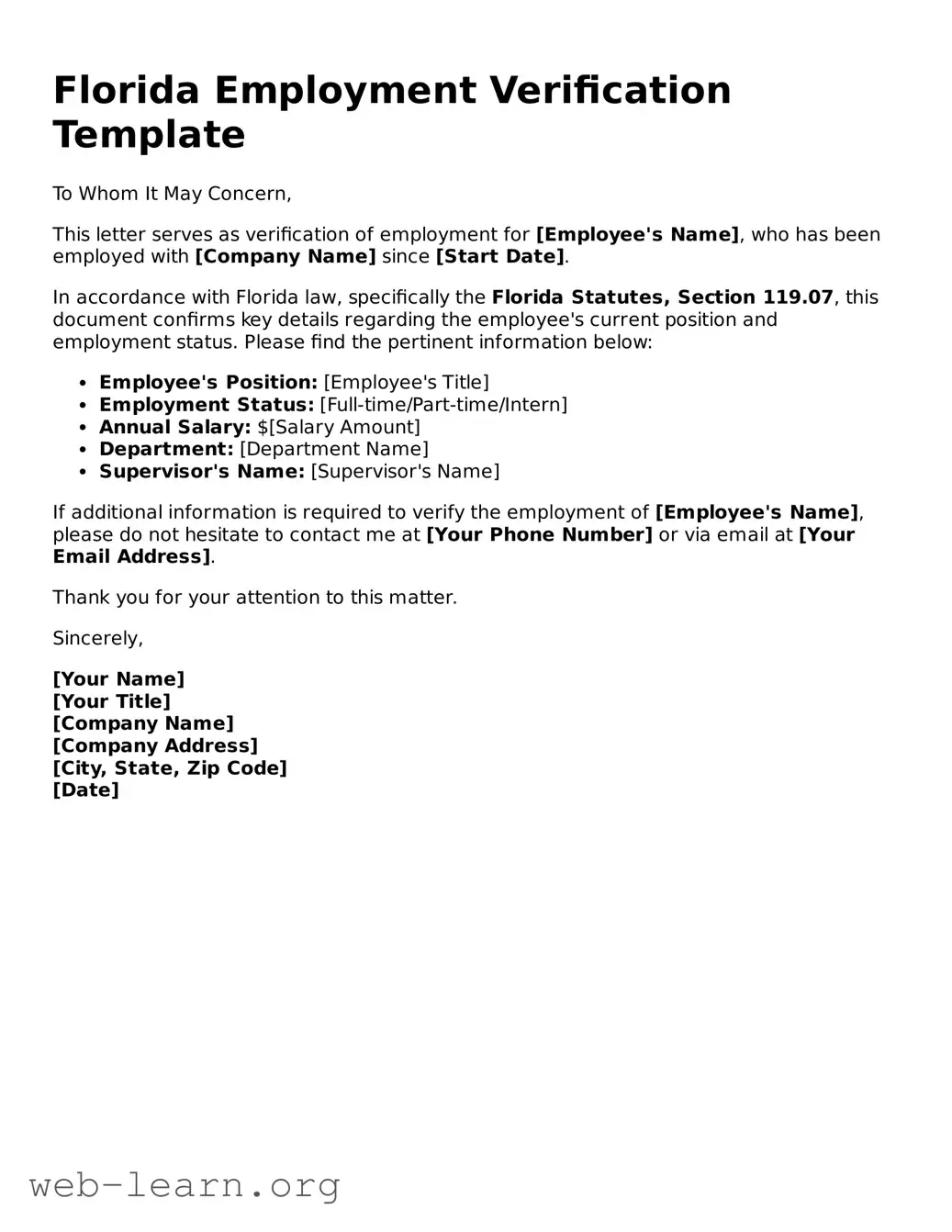Attorney-Approved Employment Verification Document for the State of Florida
The Florida Employment Verification form is a document used to confirm an individual's employment status and history in the state of Florida. Employers typically fill out this form to provide necessary details about an employee's job title, tenure, and salary. This verification is often required for various purposes, such as applying for loans, renting property, or seeking new job opportunities.
